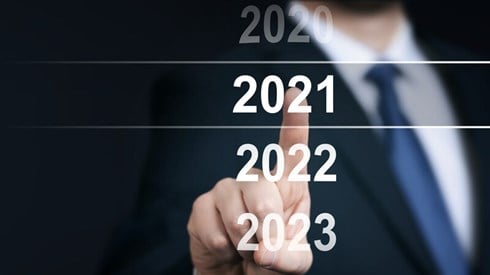Captive Insurers Must Remain Watchful for Social Inflation Signals

August 16, 2021

Social inflation has become a very real concern across a number of liability insurance lines, and it is one that captive insurance companies writing those coverages must be aware of.
Experts speaking on a panel at this year's virtual Vermont Captive Insurance Association Annual Conference discussed some of the implications of social inflation and some of the signals captives should be watching for to indicate that it could be a cause for concern.
Recognizing those social inflation signals is critical, according to one panelist participating in the session titled "Managing Your Captive in a Social Inflationary World."
"If it's percolating in your business, and claims are coming in, and you're not reacting from an underwriting or pricing or a reserving perspective, by the time the trend is confirmed, you could be in trouble," said William Wilt, president of Assured Research. "With the benefit of hindsight, if you could call it perfectly, you might lower policy limits, you might more quickly raise prices or underwrite differently."
Social inflation is not a new trend, Mr. Wilt said. "It's been around before," he said. "It is not a new insurance phenomenon." The current wave of social inflation first became noticeable in late 2016 and early 2017, Mr. Wilt said.
While normal inflation "shifts the cost of everything up, everything's more expensive," Mr. Wilt noted that "social inflation is different insofar as what it does is really shift the probability distribution. It shifts the probability of smaller claims and makes the tail fatter.
"It's raising the possibility of a large verdict," he said, changing the calculus for claims professionals and legal professionals as they're approaching claims.
Mr. Wilt said that areas his company has scrutinized to find signals of social inflation have included legal trends, judicial appointments, third-party litigation, and measures of inequality.
Another panelist, Mollie K. O'Brien, vice president, claims and litigation at American Excess Insurance Exchange, Risk Retention Group, noted that there are many factors that contribute to social inflation.
"You do have to focus on the multifactorial nature of what's causing these claims to rise," Ms. O'Brien said. "It's too easy to say that it's just because the plaintiff's bar has gotten stronger."
In defending cases in a social inflationary environment, it's important to resist becoming fearful of fully defending cases because they might result in a large jury verdict, Ms. O'Brien said. "Just because one happens and it's big, a lot of defendants tend to become fearful of putting their defenses to the test and making the plaintiff prove their case," she said. "Then they continue to overpay claims and settlements."
And it's important to treat high-severity cases differently than lower-loss cases, Ms. O'Brien said. Captive insurance companies and their parents should dedicate more resources to high-severity cases. They also need to think carefully about the defense counsel they're assigning to the cases and about their defense budgets.
"You can't treat it like a typical slip and fall, which has maybe limited minimal discovery that's going to end up with an X settlement or a verdict that is predictable," Ms. O'Brien said. "You have to buck this trend of rising severity by paying first with expenses and bring that ultimate settlement or verdict down because you're so well prepared."
Mr. Wilt said that growth in income equality is one potential signal of social inflation.
"One of the aha moments I've had talking with attorneys and people in claims is just coming to the understanding that whatever its source, anything that makes jurors mad is generally not good for defendants," he said. "People point to inequality and talk about the wealth and inequality gaps. I tend to think that they're real and they're a contributing factor."
Mr. Wilt noted that liability loss ratios spike after recessions, perhaps because people become more amenable to using the liability system as a means of redistributing wealth. Also, there's a correlation between real wages and the liability loss ratio, he said. If real wages are increasing, the liability loss ratio tends to come down.
"Conversely, though, if real wages are falling, they're not keeping pace with inflation, people get angry," Mr. Wilt said. "Anger isn't good for defendants; liability loss ratio tends to rise."
Mr. Wilt discussed the impact of social inflation in the 1980s on state tort reform efforts at the time. Social inflation in the early or mid-1980s led to the liability insurance crisis of the mid-1980s, he said. That prompted 39 states to pass 82 different tort reform measures from 1985 to 1990.
But there are reasons to believe the current social inflation trend won't drive a similar tort reform environment, Mr. Wilt said. "First, industry losses aren't that bad," he said. "Things maybe need to improve now. The hard market is helping to correct that."
Also, economies in so-called judicial hellhole states are not suffering from litigation, Mr. Wilt said. States rated as having difficult legal environments are producing very similar economic results to those with the best legal environments.
In that environment, "What's the catalyst for reform? What's going to cause politicians, state legislatures to act if their economies are doing just fine?" he said. "We offer that as reason to think that we're not going to be saved by tort reform."
Consequently, faced with the current social inflation trend, "The best course of action we think for insurers, for the insurer universe, is to be mindful of this, keep underwriting for it, price for social inflation, reserve for it," Mr. Wilt said.
John Ferrara, senior manager at Ernst & Young, moderated the session.
August 16, 2021




